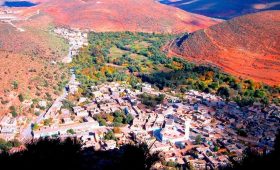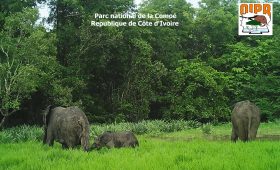Sarmishsay Gorge: A Journey Through Time and Nature
Discovering the Landscape
Sarmishsay Gorge, located in Uzbekistan’s Karatau Mountain Range, offers a striking landscape shaped by the Sarmish River. This area, part of the Western Tian Shan, is recognized by UNESCO for its natural and historical significance. The gorge’s sandstone cliffs and lush vegetation, including over 650 plant species, create a vibrant tapestry, especially in spring when wildflowers bloom. The region’s biodiversity once supported a rich array of wildlife, some of which, like the Central Asian cobra and Severtsev sheep, are now endangered.
Exploring Ancient Petroglyphs
Sarmishsay Gorge is home to over 10,000 petroglyphs, making it one of Central Asia’s most significant archaeological sites. These rock carvings span from the 9th millennium BC to the 18th century AD. They depict a variety of scenes, from hunting and domesticated animals to religious rituals. The petroglyphs offer insights into the lives of early inhabitants, including the Scythians, who left behind images of horses and religious rites. While exploring, you’ll find depictions of extinct animals like the aurochs, alongside mythical figures such as a three-humped camel.
Cultural Insights
The cultural tapestry of Sarmishsay extends beyond its petroglyphs. The area has been a crossroads for various cultures, from the Neolithic Kelteminar settlers to Islamic communities. Arabic inscriptions and Sufi carvings highlight the region’s historical depth. Visitors can engage with local Uzbek culture by exploring nearby markets, sampling traditional dishes, and experiencing music and dance performances.
Travel Logistics
Reaching Sarmishsay Gorge involves a journey from Tashkent, Uzbekistan’s capital. The drive, approximately three to four hours, offers scenic views of the landscape. For those preferring public transport, buses run to Navoi, a nearby town, where local transportation to the gorge can be arranged. While the journey is straightforward, the lack of direct public transport to the gorge itself can be a challenge for some travelers.
When to Visit
The ideal times to visit Sarmishsay Gorge are spring and autumn, when the weather is mild and the scenery is at its most vibrant. Spring brings a burst of wildflowers, while autumn offers a palette of changing leaves. Winter visits are possible but come with colder temperatures, requiring warm clothing.
Accommodation Options
While there are no accommodations within Sarmishsay Gorge itself, nearby towns like Navoi offer a range of hotels and guesthouses. Alternatively, staying in Tashkent and making day trips to the gorge is a viable option. Booking in advance is recommended, especially during peak travel seasons.
Considerations
While Sarmishsay Gorge offers a rich blend of natural beauty and historical intrigue, visitors should be prepared for the lack of on-site amenities. The remote location means limited facilities, so plan accordingly. Despite these challenges, the gorge’s unique offerings make it a worthwhile destination for those interested in history and nature.




